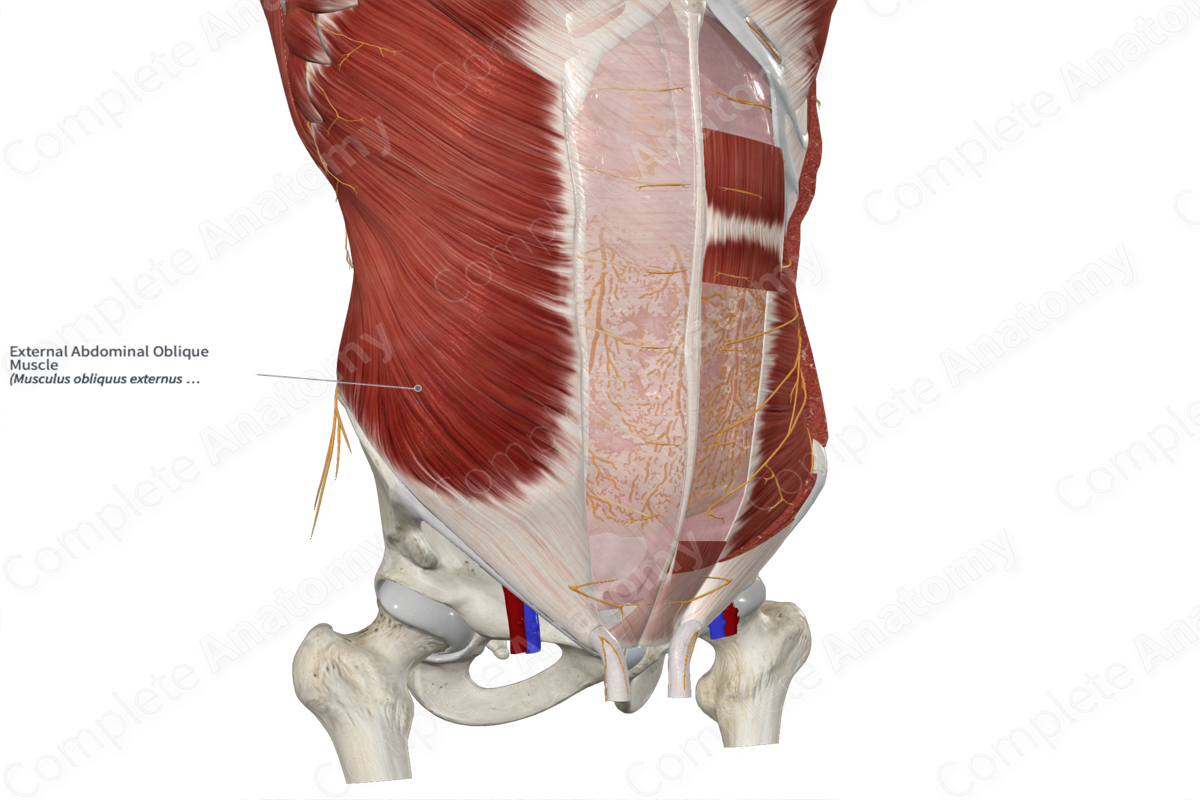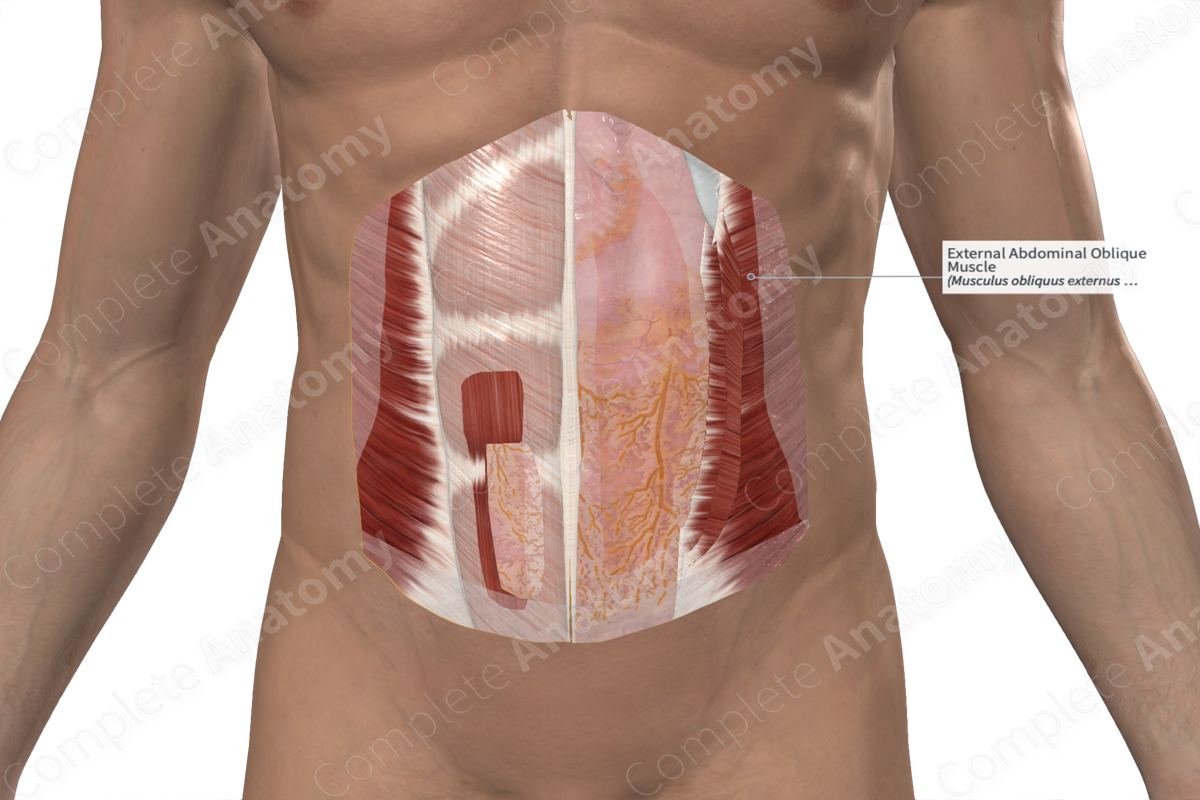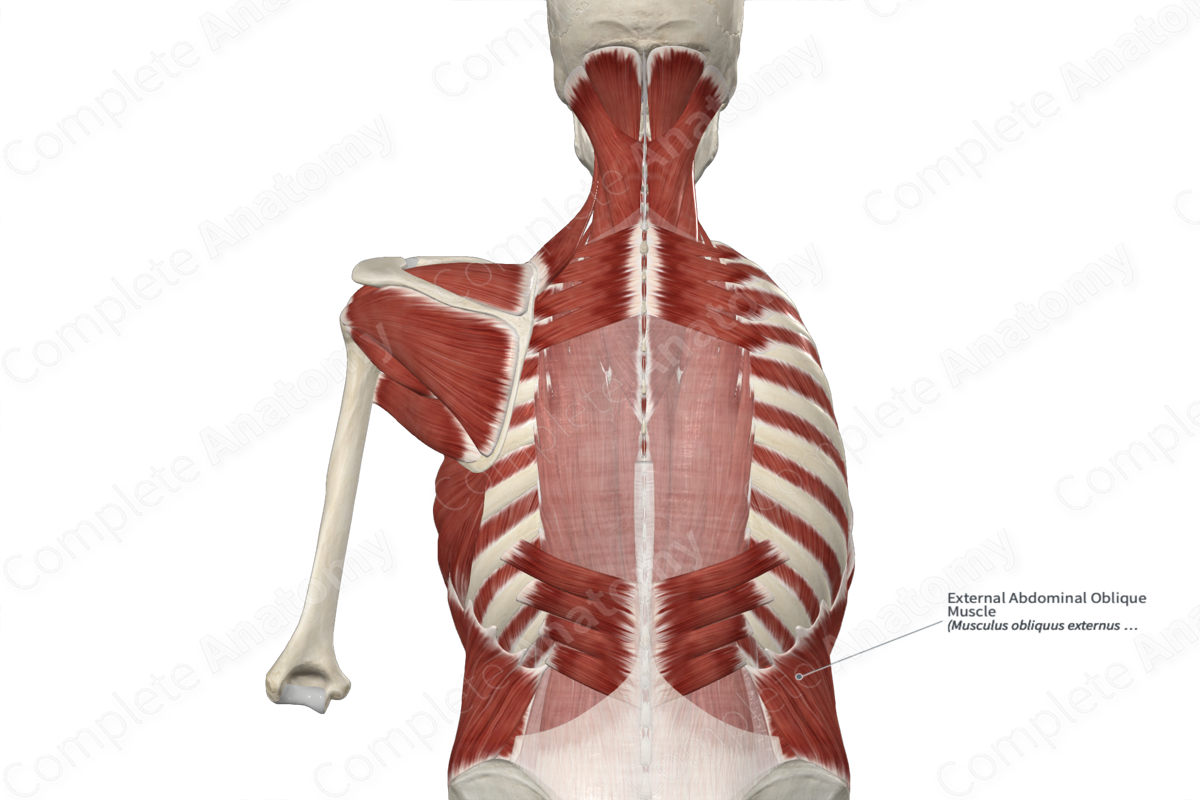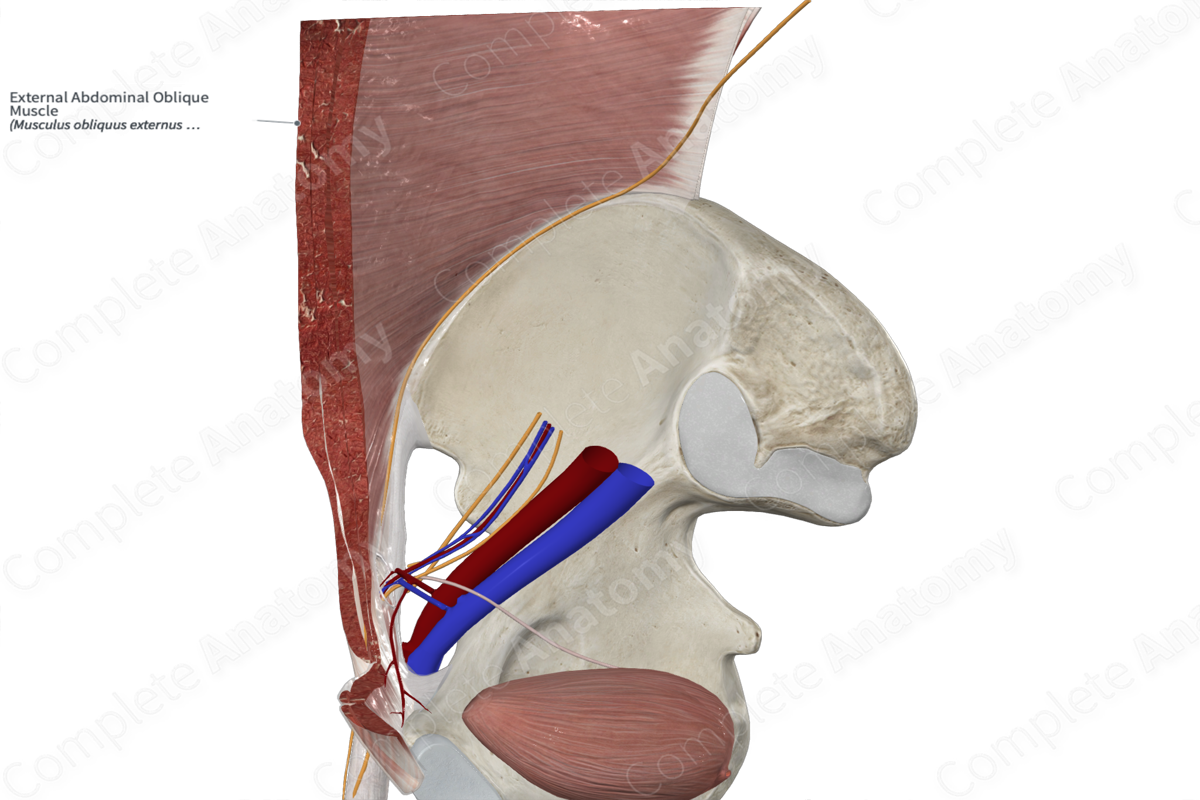
Quick Facts
Origin: External surfaces and inferior borders of fifth to twelfth ribs.
Insertion: Anterior superior iliac spine, anterior half of iliac crest, pubic crest, pubic tubercle, linea alba.
Action: Flexes, laterally flexes, and rotates trunk; compresses and provides structural support to adjacent abdominal structures.
Innervation: Anterior rami of seventh to twelfth thoracic nerves.
Arterial Supply: Lower posterior intercostal, subcostal, deep circumflex iliac, and superior and inferior epigastric arteries.
Origin
The external abdominal oblique muscle originates from the external surfaces and inferior borders of the anterior halves of the fifth to twelfth ribs.
Insertion
The fibers of the external abdominal oblique muscle travel in anterior, medial and inferior directions around the abdomen and insert, via a broad aponeurosis, onto the:
- anterior superior iliac spine and anterior half of iliac crest;
- pubic crest and pubic tubercle;
- linea alba.
Key Features & Anatomical Relations
The external abdominal oblique muscle is one of the muscles of the abdomen. It is a broad, flat skeletal muscle.
Adjacent to the midclavicular line, and superior to the level of the umbilicus, the muscle belly gives rise to a broad aponeurosis, which:
- medially, contributes to the formation of the anterior layer of the rectus sheath;
- inferiorly, contains the superficial inguinal ring and forms a thickening between the anterior superior iliac spine and the pubic tubercle, known as the inguinal ligament.
The external abdominal oblique muscle is located:
- superficial to the lower ribs and their adjacent costal cartilages and external intercostal muscles, and the internal abdominal oblique muscle;
- lateral to the rectus abdominis muscle.
The external abdominal oblique contributes to the formation of the:
- anterolateral abdominal wall;
- inguinal canal;
- lumbar triangle (triangle of Petit), where the external abdominal oblique muscle forms its anterior boundary.
At their origin sites on the ribs, the fibers of the external abdominal oblique muscle interdigitate with the fibers of the serratus anterior and latissimus dorsi muscles.
Actions
The external abdominal oblique muscle is involved in multiple actions:
- during unilateral contraction, it laterally flexes the trunk to the same side;
- during unilateral contraction, it rotates the trunk to the opposite side;
- during bilateral contraction, it flexes the trunk;
- it compresses and provides structural support to adjacent abdominal structures;
- it depresses the ribs at their costovertebral joints during forced expiration (Sinnatamby, 2011).
List of Clinical Correlates
- Contributes to the formation of the lumbar triangle, which is a potential site for lumbar herniation
- Inguinal hernias
References
Sinnatamby, C. S. (2011) Last's Anatomy: Regional and Applied. ClinicalKey 2012: Churchill Livingstone/Elsevier.
Learn more about this topic from other Elsevier products





